The Student Dress Code Keeps Order in Our School
In 1969, the supreme court case TINKER v. DES MOINES SCHOOL DIST. Implemented the first ruling of dress code conditions in schools. It was established and ruled on by the Supreme Court due to the many high school students wearing black armbands in protest of the Vietnam War in the 1960’s. Our modern schools still uphold the supreme court’s decision and it continues to apply in today’s modern world. The court ruled that schools would limit student expression and their way of dressing themselves. It was a concern that possible forms of expression would distract students in their learning environment. Typical examples of clothing expression that were being targeted with dress codes included gang-related clothing, length of the clothes, sexually explicit clothing, representation or advertising of drugs and alcohol, hats, and ripped jeans. Many people see these rules as sexist, but it is not at all. Students are required to dress modestly and appropriately. Ms. McNab, the assistant principal in charge of discipline and athletics states “… What we (the school staff) are trying to do is make a professional atmosphere at the school for you guys. This is your work, so we are trying to maintain that this is a serious place.”
Having a dress code does have some positives that students need to consider. For example, it provides less stress to the already nerve-racked high school student when they are worried about how to dress to impress. “…The student dress code helps students to not distract from what they are going to school for which is schoolwork.” a student [who wishes to stay anonymous] says “Another positive that (the dress code) has is to prepare for dress codes in the workplace. Are businesses sexist for telling their workers to wear a collar shirt and pants to work? No, they are not, because it is the rules. It would be sexist for them however if they said one gender could wear this and the other gender can not.” Taft HS is preparing their students for the fact that there are dress codes in the workplace and they have to follow them unless they want to lose their jobs.
Opponents to dress codes often say that the dress code is sexist because it “slut-shames” girls and only teaches boys that girls provoke them to bad behavior. The entire dress code policy applies to ALL genders. Not just females. The reason why many feel it targets girls is due to the fact that a girl’s fashion is different and possibly more revealing than the fashion of boys. Girls appear to be more likely to get dress coded when they wear booty shorts, and strapless shirts, while boys are less like to dress in that style. While there are dress code violations for boys, they are fewer because of the nature of the clothing. It is very rare to see a boy in a crop top walking the hallways. But you can be sure that if this were to happen, the boy would be dress-coded immediately. A more typical male-centric dress code violation would be for sagging pants or wearing clothes that have inappropriate images or sayings on them, something that girls do less often because of typical and popular fashion choices today. Though if a girl were to sag their pants they would be dress coded too.
The issue that needs to change with the dress code is not its existence, but the way the school enforces it. Many girls, including myself, are afraid to be dress coded due to the shame that overflows when we are dress coded. Instead of publicly outing that they are dress coded, staff should talk to them in private. Operation between students and staff would be much more comfortable. The dress code was not created for a boy to “be boys.” The dress code is to in place to prevent distractions of the social pressure in having to look a certain way at school. If a boy is getting distracted at school by a student’s choice of clothing, then their mentors, teachers, or parents have taught them nothing of respect, and how to pay proper attention at school. The dress code’s purpose is to create a modest education environment and not to feel like girls being shamed or overly sexualized by it.. Trust me; there is nothing provocative of shoulders. 😉
Overall, the dress code helps keep everything in check in our school. It helps students prepare for the working world. It is not intended to be sexist at all. It is equal and fair for everyone, when implemented in an equal and fair way.
This article is part of a series. Click here to view the other half of the series.
Do you support the school's dress code?
- No (74%, 73 Votes)
- Yes (26%, 25 Votes)
Total Voters: 98
Have you ever been dress coded at school?
- Never (56%, 49 Votes)
- Just once (17%, 15 Votes)
- A bunch! (17%, 15 Votes)
- A few times (10%, 9 Votes)
Total Voters: 88

Hi! My name is Kelly Cervantes. I am 17 years old and I am senior at Taft. Some information
about me is that I am very tiny (5ft). I am Mexican...


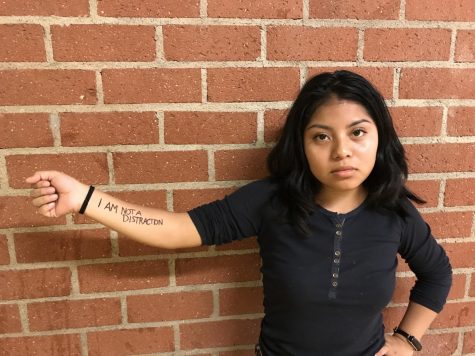





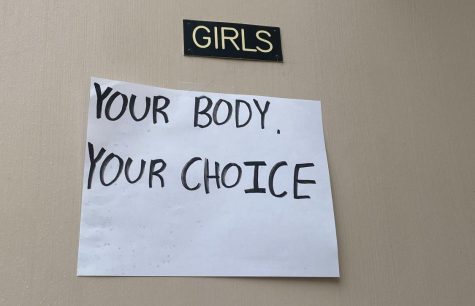
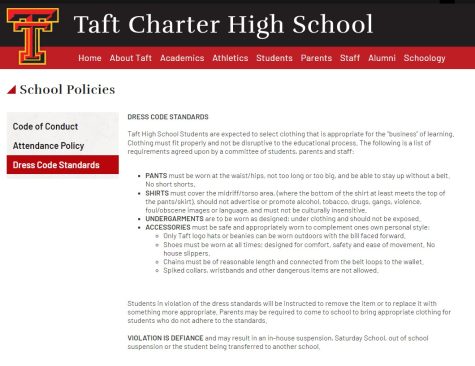
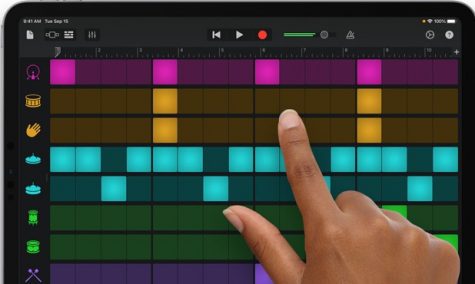
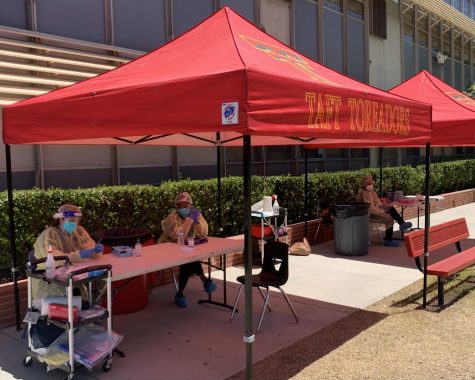


Artina Tarokh • Nov 5, 2018 at 7:02 pm
I agree with this article. Although I myself have not been dress coded, I see why some might find it unfair. But still, you have to keep in mind that your wardrobe should be the least of your worries, especially in such an important place such as school.
Kevin K • Nov 5, 2018 at 6:14 pm
Personally, I think that having a proper dress code at a school keeps the staff, students, and Taft HS very disciplined and organized. What would school be like if both boys and girls wore inappropriate stuff, booty shorts, and strapless shirts. People would get easily distracted and it would make Taft HS an insufficient place to study and go to school. Ms. McNab, for the most part, has done a terrific job of catching and controlling people who have been dress coded at school. I remember when I once wore a shirt that had a naked girl and was inappropriate to the public. I learned that I now should not wear this shirt to school to avoid future consequences from the school staff. On the other side, I think it is okay to wear something inappropriate, that would get dress coded at school, to some lunch or to the mall. I believe that a person could wear anything he wants outside of school. This writer did a good job presenting the information in a couple of paragraphs, making it very readable and understandable. Just for future reference, if I was the writer, I would most like talk about the percentage of students in Taft HS that have been dress coded for the past couple of years. This would present and show a more visual and graphical representation about the problem about dress coding in schools.
Maryam Menalagha • Nov 5, 2018 at 9:45 am
I believe that the dress-code would have many benefits, the ones mentioned in this article. However, no dress-code allows the individual to express their style and how they want to be looked at by others. This freedom of choosing what you wear to influence how you are looked at by others is very important to me. I would not want to look like everyone else, i would like to show off MY style, it is my statement of who I am.